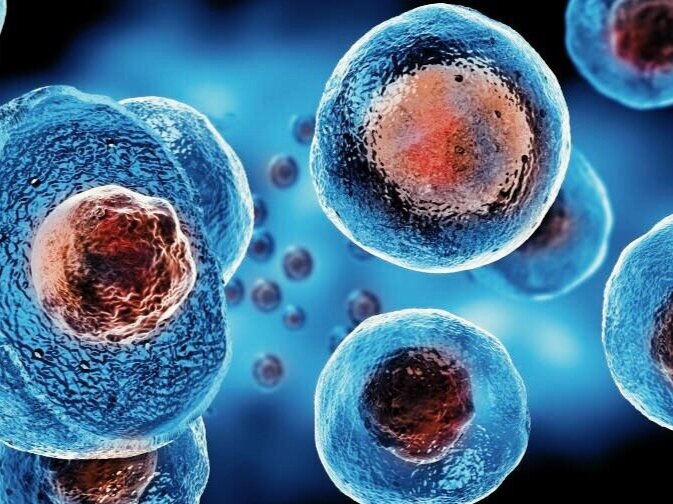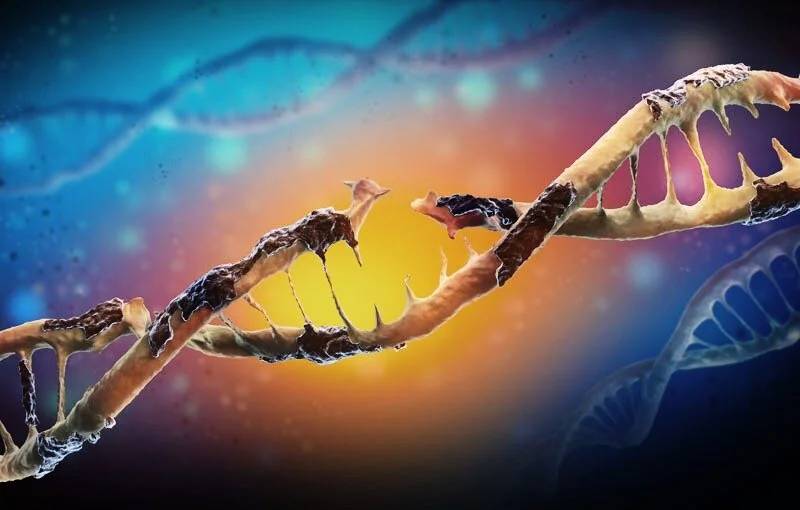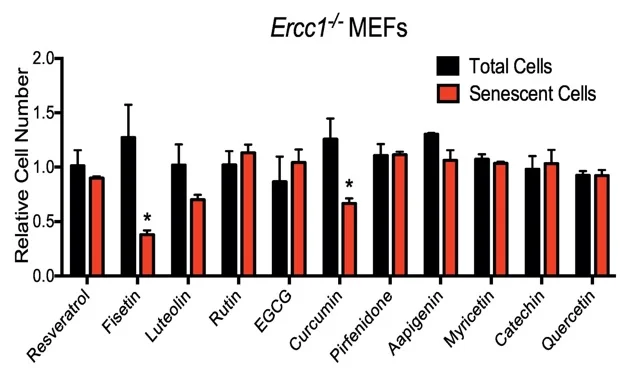
RECENT
APPLICATION OF STEM CELL TECHNOLOGY FOR ANTI-AGING
Stem cell therapies are becoming increasingly popular for anti-aging. Celebrities and middle age business men and women are flocking to exotic locations to inject themselves. But is this all in vain? In this article we will discuss the various applications of stem cells in anti-aging, and the efficacy of each approach.
Stem cell therapies are becoming increasingly popular for anti-aging. Makeup, moisturizers and face masks line the shelves touting the benefits of various “stem cell” formulations. Celebrities and middle age business men and women are flocking to exotic locations to inject themselves with stem cells sucked from their belly fat. Is this all in vein or is there some credible science behind this?
Stem cells show a lot of promise for the treatment of aging and various age-related diseases but the science is new and there are very few high quality studies. In addition, there are many different formulations and delivery methods, each of which is not equally effective.
In this article we will discuss the various applications of stem cells in anti-aging, and the efficacy of each approach.
WHAT ARE STEM CELLS?
Stem cells are cells which have the ability to divide and transform into other types of cells. They are involved in building every type of tissue in the human body. This is why stem cells have great potential for therapeutic uses in tissue regeneration and repair.
Unfortunately, the number and function of stem cells in our bodies declines with age, this is one of the reasons why our bodies natural healing and repair processes decline with age, and is a contributing factor to many age-related diseases.
THERE ARE SEVERAL TYPES OF STEM CELLS
Pluripotent stem cells could become any type of cell in the body. For example, embryonic cells are pluripotent and can become stomach, lung, skin, or brain cells.
Multipotent stem cells develop into different specialized cells of a specific tissue. Unlike pluripotent cells, the fate of multipotent cells is limited. Mesenchymal stem cells (MSCs) are an example of multipotent cells that can develop into bone cells, cartilage cells, and muscle cells. MSCs are currently very significant in stem cell therapy because they can readily be harvested from adult donors, unlike the other types of cells.
Unipotent stem cells have the ability to become only one type of cell. For example, the satellite cells of the skeletal muscle are limited to becoming mature skeletal muscle cells.
VARIOUS DELIVERY METHODS OF STEM CELLS
When treating patients for injury or anti-aging purposes there are a variety of stem cell delivery methods, some of the most common approaches are:
Direct injection
This is where the stem cells are injected directly into the site which is being targeted. For example, for arthritis the stem cells would be injected into the affected joint. Or for facial aging, the cells might be injected into the surface of the skin. While there is limited evidence, direct injection of stem cells appears promising.
Grafts
In a graft a bio scaffolds is created to function as a porous and permeable solid structure for stem cell attachment, growth, and migration. This scaffold is then surgically inserted into the site of injury. While there is limited evidence, grafts appear to be a promising method for delivering stem cells to facilitate repair in problem areas.
IV
Some treatments deliver stem cells intravenously. Some doctors claim that the stem cells will be able to target the problem areas in the body and deliver systemic anti-aging benefits. Unfortunately, the evidence to back up this claim is lacking, most stem cells which are injected intravenously end up trapped in the lungs, liver and kidneys (1).
Topical Creams
Some products such as face creams and masks claim they contain stem cell formulations which can be topically applied. There is no evidence that such a formulation would be beneficial as stem cells will not survive in this environment.
ARE STEM CELLS EFFECTIVE FOR ANTIAGING?
Aging is leading risk factor for many diseases, one of the primary causes of diseases like arterial atherosclerosis, Alzheimer’s and Parkinson’s, is the decline in the self-repairing capabilities of our cells as we age. A decline in the rate of cell division and the rate at which stem cells transform into other types of cells is a characteristic of aging. This decline in cell division reduces our ability to repair tissues and maintain organs as we get older. Therefore, stem cell technology is a likely candidate to slow or even reverse the aging process.
Stem cell treatments have shown promise in promoting our bodies self-repairing capability, and therefore could have powerful anti-aging benefits. As stem cells replace our damaged or non-functioning cells, they help us maintain normal function of our tissues and organs (2) (3).
Stem cells are also known to secrete various biologically active proteins such as growth factors, cytokines and other proteins that are important in cell signaling and vital immune function. This plays a very important role in tissue regeneration. For example, mesenchymal stem cells (MSCs) can secrete signal protein - vascular endothelial growth factor (VEGF) that stimulates the formation and regeneration of blood vessels. This provides a big advantage for elderly body's ability to repair and regenerate especially because it's more prone to certain diseases (4).
WHAT ARE THE RESULTS SO FAR?
For Longevity
There currently are no conclusive studies in humans demonstrating that stem cell treatments can increase lifespan, however studies in mice show some promise. In one study stem cells were intravenously transplanted to 10-month-old rats once a month throughout their lives. This led to cognitive and physical improvements and their life span was extended by between 23% and 31% (5).
Caution should be exercised when extrapolating these results to humans. These rats were given very large doses and they were given repeatedly throughout their lifetime. In humans the vast majority of stem cells delivered intravenously end up trapped in the lungs, liver and kidneys, very little makes its was to other vital organs such as the heart and brain. In addition, it is not feasible nor affordable for most people to get treatment every month for the rest of their lives.
FACIAL AGING
The production of collagen starts to decline as we age which leads to wrinkles and sagging skin. One study has shown that many small injections of the stem cells just below the surface of the facial skin led to significant improvements in several markers of skin aging. Stem cells helped with formation of new blood vessels from pre-existing ones, survival of the cells & their division, boosted immune response and they helped with overall collagen degradation (6).
In addition, fat-derived stem cells are often used in plastic surgery as seed cells. They play important role in prevention of photoaging (premature aging of the skin caused by repeated exposure to ultraviolet radiation (UV) – sun light). As we age, melanocytes (cells that synthesize skin pigment - melanin) become victim to excess sun exposure, inflammation and hormonal changes which can lead to development of unsightly dark spots and hyperpigmentation. This therapy has been shown to help with these aging symptoms.
FOR THE BRAIN
The function of neural cells in our brains declines with age. Aging in the central nervous system is associated with progressive loss of function which is exacerbated by neurodegenerative disorders such as Alzheimer's and Parkinson's diseases.
Cell therapy may be able to replenish lost cells and restore brain function. There are two primary strategies to achieve cell replacement. The first is transplantation of exogenous stem cells and the second is stimulating the body’s own activation of its neural stem cell population (7).
As most people would not risk injecting stem cells into their brains for potential anti-aging benefits these experimental treatments are reserved for only the most serious brain injuries. However, stimulating the body’s own production of stem cells may be beneficial, this can be done via supplements which are outlined in our anti-aging guide. (8)
FOR THE IMMUNE SYSTEM
It is well established that our immune system becomes less effective as we age. The decline in immune function which we experience with age, is partly due to the loss in efficacy of our bodies blood cells, largely as a result of decreased production of certain blood cells know as B and T lymphocytes. This can lead to various diseases including cancer.
Hematopoietic stems cells (HSC's) are stem cells which give rise to other blood cells. Some research has suggested that reconstituting HSC or pluripotent stems cells may rejuvenate the supply of stem cells and help boost our immune systems (9).
HSC’s have been used to boost the immune systems of cancer patients for years via bone marrow transplants, however this treatment should only be reserved for extreme life-saving cases and is not suitable for anti-aging purposes.
A safer alternative may be rejuvenating our existing stem cell populations, this could be achieved through NAD+ supplementation (see our anti-aging report).
SKELETAL MUSCLES
One of the reasons our muscles can repair so quickly is we have a very large pool of stem cells in our muscles. As we age, we experience a loss of muscle function partly as out muscle stem cell pool is depleted.
Some therapies have been shown to restore the ability of muscle stems cells to rejuvenate. One of these treatments is NAD+ recruitment as mentioned in our anti-aging report. Supplementation with NAD+ precursors like NR can help protect from the loss of muscle stem cells, this has been demonstrated this effect in mice (10).
FOR OSTEOARTHRITIS
In clinical trials stem cells have been used to regenerate cartilage and safely treat Osteoarthritis (OA). Stem cells can have beneficial effects in regulating the microenvironment of damaged tissue, leading to more favorable conditions for tissue regeneration. Stem cells have been used in cell therapy to promote the repair of cartilage, muscle, and bone.
There was no serious side effects demonstrated however due to regulatory issues in the US only Stromal Vascular Fraction (SVF), a cellular extract that is made in a laboratory from fat is currently approved for clinical uses in humans. SVF only contains a small amount of stem cells (11).
STEM CELL THERAPY – COST, BENEFITS & SIDE EFFECTS
Stem cell therapy can cost anywhere between $500 to $50,000.
The cost depends on many variables such as the type of stem cells that are being used, where you are performing the treatment, where the laboratory is located, and if the cells that are being used are ethically sourced & regulated.
SIDE EFFECTS & RISKS
Some serious side effects that can occur include:
Administration site reactions
The ability of cells to move from placement sites and change into
inappropriate cell types or multiplyFailure of cells to work as expected
The growth of tumors.
Unproven stem cell treatments can be unsafe, so remember - make sure to do your research and ask as many questions as you can before you to commit to an actual treatment. If you are considering treatment in the United States, ask your health care provider if the FDA has reviewed the treatment.
CONCLUSION
The results from clinical trials and studies have demonstrated that stem cell have great potential for regeneration medicine and help with age-related problems such as slower regeneration time and degradation of our tissues. However, stem cell treatments are still regarded as experimental in the US. With further development of stem cell technology, it is only a matter of time before it becomes an effective treatment for aging-related diseases and offer new kind of alternatives for antiaging.
Being treated with stem cells is also not without significant risks, including the potential to cause cancer. Therefore, restraint is advised. Stem cell therapies should only be considered where other options are not effective. If you choose to have a stem cell treatment make sure you go to an approved and accredited facility. Also, it is best to consider treatments which have already shown some promise such as site injections or scaffolds, avoid anyone touting the benefits of a systemic intravenous injection.
REFERENCES
1) https://www.ncbi.nlm.nih.gov/pmc/articles/PMC5260805/
2) Tsang SH (2013) Stem cell biology and regenerative medicine in ophthalmology. Springer, New York
3) Somasundaram I (2014) Stem cell therapy for organ failure. Springer, New Delhi
4) https://www.ncbi.nlm.nih.gov/pubmed/25797907
5) https://www.ncbi.nlm.nih.gov/pubmed/26315571
6) https://doi.org/10.1155/2016/7315830
7) https://doi.org/10.1111/j.1582-4934.2002.tb00451.x
8) https://www.nature.com/articles/s41536-017-0033-0
9) https://doi.org/10.5966/sctm.2014-0132
What is intermittent fasting and what are the benefits?
Intermittent fasting, refers to a diet that involves avoiding food intake, for a period of time, on a regular basis. Intermittent fasting delivers many benefits beyond just weight-loss, it may even help to extend lifespan. In this article we explore what intermittent fasting is, what benefits it can deliver and various methods of practicing this diet.
Intermittent fasting, refers to a diet that involves avoiding food intake, for a period of time, on a regular basis. Intermittent fasting delivers many benefits beyond just weight-loss, it may even help to extend lifespan. In this article we explore what intermittent fasting is, what benefits it can deliver and various methods of practicing this diet.
What is intermittent fasting?
Intermittent fasting is a special diet in which people have to restrict how much or when they eat food in a given period of time. It involves eating food only during a specific number of hours in a day or week.
Intermittent fasting differs from other diets in that it does not tell you what you can or can’t eat, nor how much to eat. During the feeding times you can eat whatever you want, and as much as you want!
There are various methods of intermittent fasting, some lasting hours and some lasting several days, we will go into more detail on the different methods of fasting later in this article.
Typically, during the period of fasting you may not eat any food, however there are exceptions on some longer fasting programs you may be allowed a small amount of calories. During the fasting period you are allowed to drink water, unsweetened tea and coffee, and other low-calorie beverages.
What are the benefits of intermittent fasting?
Promotes longevity
Animal studies have shown that intermittent fasting can significantly extend lifespan. The results are striking, in one study rats who fasted every other day lived 83% longer on average than the control group (1).
While the effect on longevity hasn’t been proven in humans, intermittent fasting has been shown to deliver a range of benefits in humans which should contribute to increased lifespan, these are outlined below.
Promotes weight loss
Obesity is one of the common precursors to several diseases including heart attacks, high cholesterol, stroke, hypertension, and diabetes. These disorders are known to reduce the lifespan of a person and also affect their quality of life.
Intermittent fasting can promote weight loss by triggering the use of fats stored in the body (2).
Intermittent fasting involves eating fewer meals, which reduces the calorie intake of a person. Unless the person compensates for the reduced number of meals by overeating during the phase of food intake (typically you won’t), the overall calorie consumption of a person stands reduced.
Intermittent fasting also causes reduced insulin production, increased growth hormone secretion (up to 5x normal amounts), and increased norepinephrine levels all of which support the breakdown of fats to be used as energy (3) (4).
Fasting is a quick way to lose weight
May help prevent cancer
Fasting slows down the rate of cell growth, and stimulates autophagy, the body’s clean up mode. Both of these effects may help to reduce the growth of cancers, or even eliminate small tumors and pre-cancerous cells. Conclusive human studies are still needed but the results in animals appear promising.
In one study a group of rats were infected with tumors, 50% of those on calorie restriction survived 10 days later, whereas only 13% of those with normal diets survived (5).
In addition, fasting during chemotherapy treatment seems to reduce the side effects of chemotherapy. This works because chemotherapy targets rapidly dividing cells. During fasting cell division slows down, this slowing effect is far more pronounced in regular tissues than in cancer cells. Thus the chemotherapy is able to better target cancer cells while affecting fewer healthy cells (6).
Improves organ and brain health
Intermittent fasting can improve the health of vital organs including the brain, heart, liver, and kidneys, thereby improving longevity. For example; research studies have revealed that intermittent fasting can improve the risk factors for heart attacks such as hypertension, inflammatory markers, cholesterol and triglycerides levels, and blood sugar levels (7).
It can also slow down the degenerative changes in the brain and improve cognitive functions such as memory, attention span, and problem-solving skills. It may reduce the risk of degenerative brain disorders like Alzheimer's disease, and dementia and thus, improve longevity (8).
Fasting can help protect our brains from degenerative diseases like dementia
How else does it benefit longevity, at a cellular level?
Improved cellular clean up processes
Our cells incur a huge amount of DNA damage on a daily basis. This is caused by environmental factors such as solar radiation and pollution, by-products from our metabolism such as free radicals, and the DNA replication itself is prone to error.
Fortunately, our bodies can repair damaged DNA. One method of DNA repair is via the sirtuin proteins. Sirtuins are a family of proteins that assist in DNA repair. They are activated when the body senses it is in a stressed state (e.g. fasting). Activating the sirtuins accelerates the DNA repair processes in our bodies.
Fasting also stimulates a cellular detoxification processes known as autophagy (9). Autophagy is the body's way of cleaning out cellular trash to restore the health and functioning of cells. This cellular trash if left uncleared can lead to inflammation and even cancer.
Every day our DNA incurs millions of DNA strand breaks, which need to be repaired
Improved mitochondrial functions
A research study conducted by Harvard researchers has shown that intermittent fasting could increase lifespan by slowing down degenerative changes in the body and delaying the effects of aging. It is believed to work by improving general health by modifying the activities of the mitochondrial network inside the body cells and tissues (10).
Mitochondria work like small power plants for our cells. Mitochondria also play a key role in the aging of the cells. The studies have shown that changing the shape of mitochondrial networks can enhance the power generating abilities of the cells and thereby improve their longevity and lifespan.
More importantly, it also illustrates that fasting could manipulate these mitochondrial networks and thus, maintain their "youthful" state (11).
Mitochondria are the power factories of our cells
Reduced oxidative stress and inflammation
Oxidative stress and inflammation in the cells can speed up the aging process.
Oxidative stress occurs due to the damage caused by unstable molecules known as free radicals. Free radicals have the ability to react with and damage other molecules such as proteins and DNA. This can trigger degenerative and cancerous changes in healthy organs. Similarly inflammation in the body can cause damage to nearby cells and DNA.
Several studies have shown that intermittent fasting could enhance the body's resistance to free radical damage or oxidative stress and reduce inflammation to slow down aging. It can also reduce the risk of cancer by protecting healthy cells against toxins and carcinogenic agents like free radicals (12).
What method of intermittent fasting seems to be the most effective?
There are several different forms of intermittent fasting, the most common approaches are described below. Ultimately, the best method of fasting is the one which works for you. Choose something you can stick to and incorporate in your routines.
Shorter fasts
Shorter fasts last for less than 24 hours. Shorter fasts are more suitable for people who are new to fasting and are not used to avoiding food intake for prolonged hours. Shorter fasts still deliver a range of benefits and can be easier to incorporate into your weekly habits.
There are two common approaches, the 16:8 and the 20:4.
In 16:8 intermittent fasting, the person should fast every day for 16 hours continuously. Sometimes, it is also called the 8-hour eating ‘window’ method. All meals should be consumed within the 8-hour time period. The 8-hour time period needs to be continuous and cannot be broken down into two or more phases.
For the rest of the 16 hours of each day you should not consume any calories. This method can be followed safely every day.
An example of 16:8 is eating all your food between 11:00 am and 7:00 pm. This would require you to skip breakfast and have an early dinner. You can eat 2 or 3 meals during the 8-hour period. You can also choose any continuous time period of 8 hours to eat depending on your routine or personal preferences.
20:4 is another form of short fasting method that involves a 4-hour window for eating and a 20-hour window for fasting. You can choose a continuous time period of 4 hours such as between 1:00 pm and 5:00 pm every day and avoid food intake for the remaining 20 hours. This would generally involve eating 1 meal or 2 smaller meals within the 4-hour period.
Shorter fasts need to be done more frequently in order to derive the expected health benefits.
24-hour fasts
A longer fast of 24 hours can be adopted by those who feel they have the capacity to go without food for a longer duration. We suggest you try a couple of shorter fasts first before working your way up to a 24-hour fast.
The 24-hour intermittent fasting involves avoiding food intake from lunch to lunch or dinner to dinner. For example; you can eat dinner on the first day, , skip breakfast and lunch the next day, then eat dinner. This form of intermittent fasting is usually done 1 to 3 times per week.
The 5:2 intermittent fasting approach is a popular form of the 24 hour fast. The 5:2 approach involves fasting for 24 hours 2 times per week, on the other 5 days you can eat normally.
Alternate-day fasting is another common approach to the 24 hour fast whereby a person fasts for 24 hours every second day. During the other days they can eat normally.
Extended fasting
This form of intermittent fasting lasts for more than 24 hours. Extended fasting is recommended only for people who have some experience with fasting and are already comfortable fasting for 24 hours. Anyone considering extended fasting should consult their doctor first to ensure they would not be at any risk while fasting.
Extended fasting involves avoiding food intake for 2 to 14 days. Fasting for more than 14 days is not advisable as it can increase the risk of refeeding syndrome, which occurs due to the dangerous shift in minerals and fluids once food is re-introduced after a long period of fasting.
It is advisable to use multivitamin supplements during extended fasting to avoid nutritional deficiencies.
Can I consume some calories when fasting?
If you find it difficult to go completely without food for 24 hours you can still achieve many of the benefits of fasting if you consume only a small number of calories during the fasting period.
This approach won’t deliver such extreme changes as fasting completely however incorporating some calories can make fasting more sustainable in the long term for many people, therefore leading to better long term results.
If you do consume calories it is important not to consume more than 800 calories in the fasting period. 800 calories should be sufficient to help avoid food cravings and reduce the risk of hypoglycemia or low blood sugar levels. The calories can be consumed as a single meal or spread throughout the day.
If you eat on fasting days, try to stick to low calorie foods which are high in fiber
How often do you need to fast?
It is only when intermittent fasting is adopted as a dietary habit over several weeks or months that a you will see real long term results, and derive benefits such as improved longevity.
If you choose the shorter fasting approach, this should be done at least 3-5 times per week. 24-hour fasts can be done 1-3 times a week. The frequency of longer fasts depends upon duration. A 48 hour fast could be done once per week but a 4 day fast should not be done more frequently than once per month.
Intermittent fasting is easier for most people to maintain than a regular diet. Start with shorter fasts and work your way up from there. Find an approach that works for you, one which you can incorporate within your routine, and stick with it. If you do you will see results.
REFERENCES
https://www.cell.com/cell-metabolism/fulltext/S1550-4131(17)30612-5
http://www.ncl.ac.uk/press/news/2016/02/mitochondriashowntotriggercellageing/
Hacking aging - Part 2
This is the second part of the series on anti-ageing. In this article we will examine some promising approaches to hacking ageing, backed by scientific research, including fasting and various supplements.
This is the second part of the series on anti-aging. In this article we will examine some promising approaches to hacking aging, backed by scientific research, including fasting and various supplements.
Fasting
What is fasting and does it work?
Fasting is going without food, or consuming a calorie restricted diet for an extended period of time, some fasts are as short as 16 hours, some can be months long.
Fasting is probably one of the most extensively researched and evidence backed approaches for longevity. Strong evidence exists that restricting calories increases lifespan in mice and humans.
Fasting need not be constant, instead fasting for periods of time at regular intervals is sufficient to generate the same benefits seen in long term fasting studies. Interestingly rather than going without food completely similar results to fasting were observed using a Fasting Mimicking Diet (FMD), that is a diet low in calories, sugars, and proteins but high in unsaturated fats (1), one such popular diet is the Keto diet.
How does it work?
When fasting the body no longer has enough carbohydrates to sustain it and therefore switches to autophagy for its energy source. Autophagy literally translated from greek means “to eat oneself”.
The body feeds on the various damaged parts of cells such as cell membranes and proteins, thereby removing them from the body. When these sub-cellular parts are removed they are replaced with new parts, thereby restoring the cells to proper function.
In addition to promoting autophagy fasting also promotes the production of growth hormone, which helps the body produce these new replacement parts (2).
What are the benefits?
One study compared people who consumed a fasting mimicking diet for 5 days once a month for 3 months to those following a regular diet. Those who followed the periodic fasting diet showed reduced body weight and fat, lower blood pressure, and decreased IGF-1 hormone. IGF-1 has been linked to aging and disease. Further studies showed the fasting diet also decreased cholesterol and markers for inflammation (3). Animal studies have demonstrated a range of benefits including wound healing (4), and brain function (5).
How can I implement fasting in my daily life?
There are a number of ways to fast, some common approaches include:
16:8 fast: This involves limiting consumption to an 8 hour window per day. This cycle can be practiced as often as you like, once, twice per week or every day. An example of this would be skipping breakfast, but having a healthy lunch and dinner.
24 hour fast: This involves skipping meals for 24 hours, e.g. if your last meal is dinner you do not eat again until dinner the following night. This type of fast is more difficult and therefore not practiced as often, some people choose to do this once a week or once a month.
5:2 fast: This involves eating regularly for 5 days a week and eating a calorie restricted diet (no more than 500 calories per day) for 2 days a week.
Similar results can be achieved by following a calorie restricted diet such as the Keto diet. More information on the Keto diet can be found here.
Calorie Restriction Mimetics (CRM)
Let’s face it, fasting sucks, it is difficult for most people to maintain a fasted state, or even maintain intermittent fasting over a long period, therefore scientists have been researching Calorie Restriction Mimetics (CRM’s).
CRM’s are compounds when ingested mimic the body’s response to being in a fasted state. One promising group of CRM’s are sirtuin activators.
What sirtuans and sirtuan activators?
Sirtuans are proteins in the body which are responsible for DNA maintenance and repair. These genes are activated when the body senses it is in a stressed state (e.g. fasting). One of the seven sirtuans found in humans, SIRT1, can be activated by natural compounds known as polyphenols. Polyphenols are found in plants, where they are involved in defending plants from ultraviolet radiation and pathogens. Polyphenols include pterostilbene which is found in blueberries, resveratrol which is found in the skin of grapes and curcumin.
What else is required for sirtuan activators to work?
Sirtuans can only function in the presence of nicotinamide adenine dinucleotide (NAD+), NAD+ is a coenzyme found in all cells, it is responsible for helping turn nutrients into energy and regulating other biological activity. NAD+ levels in humans decline with age. Therefore boosting levels of NAD+ can help Sirtuans to continue functioning into old age.
Do these supplements work and can they by purchased?
Recent studies have highlighted potential positive effects from increased NAD+. One study showed that mice supplemented with NAD+ precursers showed increased levels of DNA repair and the tissues of 2 year old mice appeared identical to that of 3 month old mice (6). Another study showed increased levels of cognitive ability (7). There are not yet any results from human trials.
NAD+ can be taken directly or NAD+ levels can be increased by supplementation with the NAD+ precursors Nicotinamide Riboside (NR) or Nicotinamide Mononucleotide (NMN), both have been shown to raise the levels of NAD+ in the body. NR and NMN are derived from nicacin which is a form of vitamin B3, an essential human nutrient.
Most of these supplements can be purchased online, but beware are a lot of inferior products, and many which are not what the claim to be. Make sure you go with a reputable brand.
Senolytics
What are senescent cells?
As we age the body accumulates an increasing number of senescent cells. Sensescent cells are cells which are not functioning properly, but have not yet died off and been recycled, as cells are when we are younger.
Senescent cells secrete inflammatory factors, and appear to play a role an important role in ageing and many age related diseases including dementia, diabetes and cardiovascular disease (8).
Do senolytics work, and where can I purchase them?
The class of drugs known as senolytics target senescent cells, removing them but leaving healthy cells untouched. In various mice studies it has been shown that removal of senescent cells can prevent or delay tissue dysfunction and extend healthy lifespan (9, 10).
Many plant based compounds have powerful senolytic effects, one study compared the senolytic efficacy of various plant compounds in mouse cells and in senescent human fibroblasts, the results can be seen in the chart below (11).
Mouse embryonic fibroblasts (MEFs) were treated with a panel of flavonoid compounds, and the the viability of senescent cells and total cells were measured.
Among the 10 flavonoids tested Fisetin was the most effective. Fisetin is a natural compound found in strawberries, apples, cucumbers, grapes and onions. There are only a very few suppliers online, more common is curcumin, which can easily be purchased, fresh or in pill form. The bioavailabiliy of pure curcumin is relatively low, however taking it with piperine has been shown to increase its bioavailablity by as much as 2000%.
Metformin
No longevity discussion would be complete without mentioning Metformin. Metformin is a drug used to treat diabetes. When administered it mimics caloric restriction and therefore has also been shown to extend lifespan. The exact mechanism by which metformin works to increase lifespan is not yet fully understood. It appears to operate on a number of pathways including decreasing IGF-1, inhibition of mTOR, reducing DNA damage, and influencing inflammation and autophagy and influencing digestion in the gut microbiome (12).
Studies have demonstrated Metformin’s ability to increase lifespan in mice (13, 14). Several studies have shown metformin may be beneficial for decreasing the incidence of cancer, improving cognitive function and increasing lifespan (15, 16, 17). More targeted studies in humans are currently being conducted.
Metformin can in most countries be purchased with a doctor’s prescription.
Stacking for increased benefits
Evolve Fitness recommends stacking a sirtuan activator (e.g. resveratrol) an NAD+ precurser (such as NMN or NR) and a senolytic (curcumin), these can safely be taken on a daily basis however we recommend periodically taking a break from all supplement regimes. If you are considering taking metformin for longevity purposes we recommend you speak with your doctor first.
References
1. https://www.ncbi.nlm.nih.gov/pmc/articles/PMC4509734/
2. https://www.nobelprize.org/prizes/medicine/2016/press-release/
3. http://stm.sciencemag.org/content/9/377/eaai8700
4. https://www.ncbi.nlm.nih.gov/m/pubmed/25881054/
5. https://medium.com/lifeomic/this-is-your-brain-on-fasting-a77d9d264de7
6. http://science.sciencemag.org/content/355/6331/1312
7. https://www.ncbi.nlm.nih.gov/pubmed/29432159
8. https://www.ncbi.nlm.nih.gov/pubmed/26485647/
9. https://www.ncbi.nlm.nih.gov/pubmed/22048312/
10. https://www.ncbi.nlm.nih.gov/pubmed/26840489/
11. https://www.ebiomedicine.com/article/S2352-3964(18)30373-6/fulltext
12. https://www.ncbi.nlm.nih.gov/pmc/articles/PMC5943638/
13. https://www.ncbi.nlm.nih.gov/pubmed/18728386
14. https://www.ncbi.nlm.nih.gov/pubmed/21386129
15. https://www.ncbi.nlm.nih.gov/pubmed/24985407/
Hacking aging - Part 1 Could you live to 150?
If you could take a pill that allowed you to live to 150 would you? Would the answer change if you could spend those years looking and feeling fit, young, healthy and disease free? Believe it or not science may be very close to making this possible.
If you could take a pill that allowed you to live to 150 would you? Would the answer change if you could spend those years looking and feeling fit, young, healthy and disease free?
Believe it or not science may be very close to making this possible. In this article we will discuss some of the most promising recent discoveries in anti-aging research and which of these are already available.
What is longevity or anti-aging really about?
Modern medicine has become very good at repairing many of our organs, and keeping our hearts and lungs functioning. However often our brains and muscles fail us and we spend a considerable portion of the end of our lives in suffering.
Longevity isn’t about just about living longer, it is about living better and spending less of our lives in a diseased or frail state.
The biggest driver of disease is aging. In fact, age is the biggest risk factor for lung cancer, many times more important than smoking! Age is a key risk factor in many diseases including cancer, heart disease and diabetes.
If we could wind back the body clock, we would greatly reduce the risk of all these diseases, and be able to lead fitter, healthier lives. David Sinclair, who leads Harvard’s anti-aging research would go one step further to say aging itself is a disease, and one that is curable.
Anti-aging is a relatively new and exciting area of study, most of the studies to date have been on yeast and mice however the results are promising. Scientists have already been able to significantly slow and even reverse aging in the lab in yeast, mice and monkeys. Human trials are also beginning.
In the first part of this two-part series we will discuss the recent anti-aging discoveries in blood borne factors.
Can young blood make you younger?
Credit: Villeda lab
In 2005, scientists at Stanford conducted a gruesome experiment whereby they surgically attached an older mouse to a younger mouse, so that they shared one blood supply. What they observed was this improved the ability for the old mouse to heal and regenerate, effectively making the old mouse appear younger again.
It is believed that somehow the blood from the younger mouse caused the stem cells from the older mouse to become more effective at repairing damaged cells and tissue in the older mouse.
This discovery led to some silicon valley start ups offering older patients blood plasma infusions from younger donors! However in February 2019 the FDA announced such services would require Investigational New Drug approval - this effectively put these companies out of service for the time being.
The Young Blood Institute is currently conducting a large scale trial of blood transfusions (rather than infusions). In a transfusion they replace aged plasma in older subjects with young plasma components form younger subjects. Blood transfusions are considered safer than infusions, as the total volume of blood in the patient remains the same. The trial began in 2018 and will continue over the next 2-3 years, or when the first 1,000 patients are completed, whichever comes first.
To date there have been no published results but the anecdotal reports have been promising. Several patients have reported improved memory, stamina, sex drive and improved feelings of well being.
If infusing the plasma from younger people sounds a little too gruesome for you, don’t be discouraged. Scientists are working to identify the factors within young blood which might be responsible for the positive effects. This would allow the individual factors to be isolated and delivered in a targeted medicine.
Blood consists of over 10,000 factors so it is a difficult task identifying the exact constituents responsible for the beneficial effects seen in the older mice, however a number of studies have already identified several constituents which seem promising. The most promising discoveries to date include GDF-11, TIMP-2, Oxytocin, and MANF, each of these is discussed in more detail below.
GDF-11 (Growth Differentiation Factor 11)
GDF-11 is a protein found in the blood of all mammals. A team at Harvard has claimed that the levels of GDF-11 in the blood of mice declines as the mice age, and therefore is more prevalent in younger mice. The team injected GDF-11 into older mice and was able to show that the muscle density in the older mice improved to youthful levels (1). The findings earned the team the award for scientific achievement of the year in 2014.
Several members from the Harvard team have since founded a company, Elevian which is investigating human applications of GDF-11 and other factors. They believe these factors may be able to restore the body’s natural regenerative capacity, to address a root cause of age-associated disease.
So far there have been no results from clinical trials where humans have been administered with GDF-11 however Biohacker Steve Perry has been self-experimenting with GDF-11 since 2014. Since 2014 Steve has enlisted over 100 volunteers in his study. This is not a double-blind placebo-controlled study so the results should be read with caution, but it is worth a look.
Steve Perry claims that many of the volunteers in his study reported improvements in blood pressure, heart rate variability, resting pulse rate, blood glucose, hand grip strength, reaction time, memory, eye sight, smell, hearing, and for some their grey hairs disappeared! (2)
GDF-11 is not FDA approved and the risks associated with supplementing GDF-11 in humans are not yet known, therefore we would caution against experimenting on yourself. In one study GDF-11 was shown to be damaging to the liver (3). To minimize risk the doses used by the participants in Steve’s study were extremely low (requiring dilution by a factor or hundreds of thousands) and the participants in Steve’s study closely monitored their vitals, and other biomarkers on a daily basis.
GDF-11 is available for purchase on the internet however rather than supplementing GDF-11 directly, you can boost it more naturally using regular exercise. People who exercise regularly over the long term demonstrate higher levels of GDF-11 then people who lead sedentary lifestyles (4).
TIMP-2 (Tissue inhibitor of metalloproteinases 2)
TIMP-2 is a human gene and protein. One study showed that injecting mice with blood plasma from a human umbilical cord, resulted in significantly improved cognitive function. Elderly mice that received the plasma were quicker to learn and remember the escape hatch location in a maze, they were better at learning associations between a room and an electric shock and faster making nests for their babies.
The team who conducted this experiment proposed this was due to TIMP-2. TIMP-2 levels start high when we are born and decline throughout life, similar to GDF-11.
When TIMP-2 was injected directly into the older mice they observed cognitive improvements similar to those mice that were injected with the umbilical cord plasma. Also when TIMP-2 was removed from the umbilical cord blood plasma before it was injected, no cognitive function improvement was observed (5).
The mechanism by which TIMP-2 works is not yet understood. A clinical trial to see if young human blood plasma can slow the cognitive decline of people with Alzheimer’s is being conducted. So far there are no studies assessing the safety of TIMP-2 supplementation in humans.
Sugars from the Aloe Vera plant have been shown to induce TIMP-2 production in the skin of rats when applied directly to wounds (6). Potentially Aloe Vera products may be able to increase TIMP-2 levels in humans, although this has not yet been demonstrated.
Oxytocin
Oxytocin is a hormone produced in the body which plays a role in social bonding, sex and childbirth. It is often referred to as the ‘love hormone’. Oxytocin is released when we hug someone or hold their hand, it promotes feelings of trust, romance and friendship, it also increases libido. Oxytocin is released after birth to promote bonding with the baby.
Similarly to GDF-11 and TIMP-2, Oxytocin declines with age. One study demonstrated that Oxytocin has beneficial effects on maintaining healthy muscles and healing in old mice. Older mice who were injected with Oxytocin recovered faster from muscle injury than mice who were not treated with Oxytocin. The same study also demonstrated that when Oxytocin is blocked in young mice, their ability to repair muscles declined (7).
Unlike GDF-11 and TIMP-2, Oxytocin is already approved by the FDA for clinical use in humans. Pitocin is a synthetic form of Oxytocin used to help with childbirth. Also you can easily increase your own levels of Oxytocin naturally through a variety of activities including hugging, sex and, in women, nipple stimulation. Engaging socially, or playing with dogs has also been shown to increase levels of Oxytocin.
MANF (Mesencephalic Astrocyte-derived Neurotrophic Factor)
MANF is protein which is secreted by the body in response to stress. MANF is responsible for regulating metabolism and immune response. It also, like the other factors mentioned, declines with age.
In one study it was observed that MANF promoted the activation of immune cells which promoted neuroprotection and tissue repair (8). Researchers have also shown the same mechanism protects against liver damage in older mice and extends lifespan in flies.
Flies genetically engineered to express less MANF suffered from increased inflammation and shorter lifespans. Similarly older MANF deficient mice showed signs of bad health. When older mice shared a blood supply with MANF deficient younger mice, they did not see the benefits they would if sharing with younger normal mice (9).
There are several ways to increase your natural levels of MANF with the safest and easiest being fasting (10), and exposure to heat (e.g. via a sauna) (11).
Up next
In the second part of this series we will discuss some more practical approaches to anti-ageing, including fasting and various supplements which are readily available.
References
1. https://www.ncbi.nlm.nih.gov/pubmed/23663781
2. https://www.youtube.com/watch?v=Oe9mDFRJFuk
3. https://www.fasebj.org/doi/abs/10.1096/fj.201800195R
4. https://physoc.onlinelibrary.wiley.com/doi/full/10.14814/phy2.13343
5. https://www.ncbi.nlm.nih.gov/pmc/articles/PMC5586222/
6. https://www.ncbi.nlm.nih.gov/pubmed/24491493
7. https://www.ncbi.nlm.nih.gov/pmc/articles/PMC4512838/
8. https://www.ncbi.nlm.nih.gov/pubmed/27365452
9. https://www.nature.com/articles/s42255-018-0023-6

























